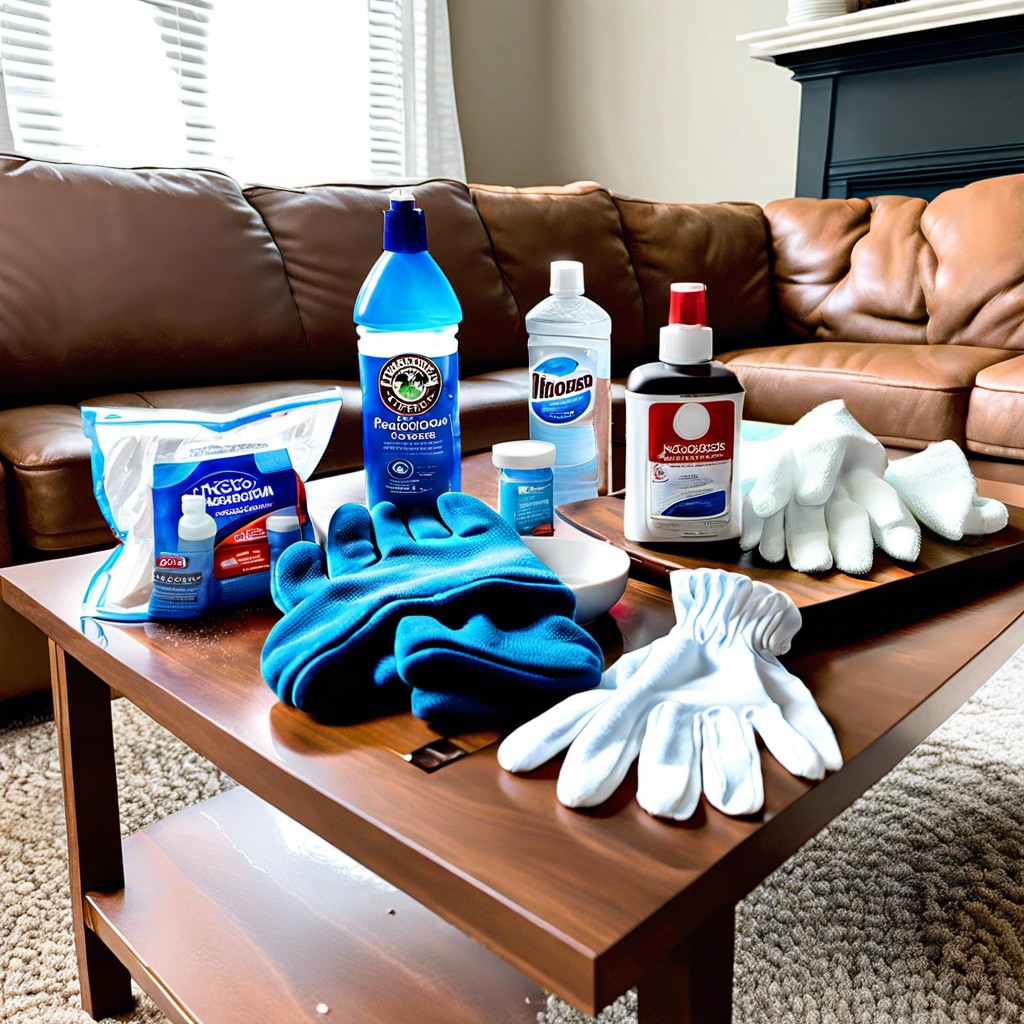Last updated on
Discover effective methods to remove gum from your car seat, restoring it to its original clean condition.
Key takeaways:
- Assess the type of car seat material before removing gum
- Identify the gum consistency (soft or hardened) for proper removal
- Use ice to harden gum and scrape it off with a credit card
- Consider freezing the seat cushion to solidify gum for easier removal
- Deal with any chewing gum stains using proper cleaning techniques
Table of Contents
Assess the Type of Car Seat Material
Determining the material of your car seat is crucial as it influences the removal method. Leather seats require gentle treatment to avoid damage, while fabric seats can handle more vigorous cleaning methods. Synthetic materials like vinyl may be less porous than natural fibers, allowing for easier gum removal. Check your vehicle’s manual for the seat material specification if you’re unsure. Always test cleaning solutions on a small, inconspicuous area to safeguard against discoloration or damage before proceeding with gum removal.
Identify the Gum Consistency
Understanding the state of the gum is crucial in choosing the most effective removal approach. If the gum is still soft and pliable, it’s more prone to smearing during removal, requiring a gentler touch. Conversely, hardened gum may be easier to remove in one piece, but often requires some form of solidification to lift off cleanly. Take a moment to press gently beside the stuck gum; if it feels sticky and adjusts shape readily, it’s soft. If it doesn’t budge easily, the gum has set and is in a more solid state. This knowledge will guide you towards selecting a technique that minimizes damage to the car seat fabric. Remember, the right consistency assessment leads to a smoother cleaning experience.
Method 1 – Ice
Begin by placing a handful of ice cubes in a plastic bag. This prevents moisture from directly contacting the seat fabric and potentially causing water stains. Press the bag firmly against the gum for a few minutes until the gum hardens.
Once the gum is hard to the touch, use a blunt scraper like a credit card or a plastic spatula to carefully lift the edges of the gum. Continue until all the gum has been chipped away. Be gentle to avoid any damage to the seat fabric.
If remnants of the gum still cling to the seat material, apply the ice bag again to harden any remaining pieces and repeat the scraping process. Remember, patience pays off – rushing may damage the car seat’s surface. Afterward, clean the area with a soft cloth dampened with soapy water to remove any residue left by the gum or the bag.
Method 4 – Freezing Technique
If the gum hasn’t fully hardened or the ice method isn’t practical, consider removing the car seat cushion, if possible, and placing it in the freezer. The freezing temperatures will solidify the gum, making it easier to scrape off. Before doing so, seal the area with gum in a plastic bag to avoid contaminating other items. Once the gum is hard, use a scraper or a credit card to gently remove it. Be careful not to damage the seat fabric. This method works well for smaller pieces of gum and ensures a cleaner removal process without the messiness of melted gum or the use of chemicals.
Dealing With Chewing Gum Stains On Upholstery
After successfully removing the gum, upholstery may still bear signs of the sticky encounter. Tackling these stains quickly ensures your car seat remains pristine. Here’s how:
– Pre-test fabric cleaners: Before applying any cleaning product, do a spot test on a hidden area to ensure it doesn’t fade or damage the upholstery.
– Use a specific upholstery cleaner: Select a cleaner designed for your car seat material, whether leather or fabric. Follow the instructions on the label for the best results.
– Apply to a cloth first: Instead of applying the cleaner directly to the stain, use a clean, white cloth to avoid oversaturation and potential watermarks.
– Blot, don’t rub: Pat the stained area gently, as rubbing might spread the stain or work it deeper into the fibers.
– Rinse cautiously: Use a damp, not wet, cloth with water to remove any cleaner residue. Too much water can seep into seat padding, leading to odors or mildew.
– Dry thoroughly: Air out the vehicle or use a hairdryer on a cool setting to speed up the drying process. Lingering moisture can be just as undermining to upholstery as the original stain.
You may also like to read:

